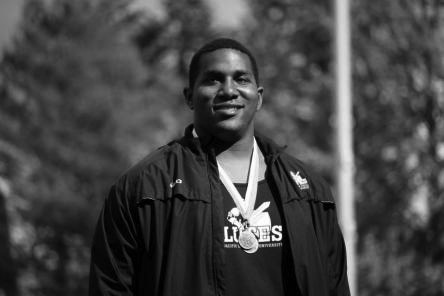Isaiah Shim
Sports Editor
Chesapeake Energy Arena in Oklahoma City, Oklahoma buzzed with excitement as the game between the Oklahoma City Thunder and Utah Jazz was about to tipoff. Excitement and anticipation soon turned into confusion as the game had not been started yet and the officials were in intense discussion with both head coaches at midcourt. Even the broadcast announcers were confused as to what was taking so long. Soon, the coaches dispersed and
both teams started to head towards their locker rooms, and fans started to head for the exits.
On March 11, the game between the Jazz and Thunder was postponed after news broke that one of the Jazz players had been quarantined and tested for COVID-19.
This was the first domino to fall.
Less than an hour after the game was postponed, it became public knowledge that Utah Jazz center Rudy Gobert tested positive for COVID-19. Four minutes later, NBA Commissioner Adam Silver declared that the NBA will be suspended indefinitely. Commissioner Silver later announced that the NBA would only be suspended for 30 days. In an interview with TNT’s “Inside the NBA” Silver said, “Even if we’re out for six weeks, we could still restart the season.”
“The notion of at least 30 days is just to try to give people some guidance. This literally changes hour by hour, as far as what we know,” he said.
Although the NBA will reevaluate their status eventually, this was a monumental decision that rocked the sports world, setting off a chain reaction of events that has never been seen before.
Shortly after news about the NBA broke, college basketball started to follow suit. Many conferences, both men’s and women’s, decided to cancel their conference tournaments. The significance of these cancellations was that the winner of a conference tournament received an automatic bid in the National Collegiate Athletic Association (NCAA) tournament, more commonly known as March Madness.
Speaking of March Madness, shortly after conferences shut down their tournaments, the NCAA entertained the idea of having empty arenas, and only allowing players, coaches and family to attend the games. However, the NCAA later made the decision to cancel March Madness entirely, ending the winter sports season.
In an official statement released on March 12, the NCAA revealed that along with winter sports ending early, spring sports would be affected as well.
“Today, NCAA President Mark Emmert and the Board of Governors canceled the Division I men’s and women’s 2020 basketball tournaments, as well as all remaining winter and spring NCAA championships.”
So how does this affect PLU? These decisions made by the NCAA apply to all levels of collegiate sports, not just Division I. Division II and Division III sports are affected by these rulings as well and will have to shut down their spring sport seasons.
Head coach of the Track and Field team Adam Frye was shocked by the decision.
“I didn’t expect that to happen so quickly. However, as the situation continued to develop and I learned and read more, I understood their desire to take decisive action.”
With so many athletes on one team, 66 to be exact, Coach Fry was adamant in telling his athletes to keep things in perspective.
“My message to the team was that it is ok to feel sad, upset, frustrated or disappointed. Having the season canceled is unprecedented and unexpected.”
He also wanted them to know that the situation goes beyond sports.
“This crisis is bigger than athletics and we have to prioritize the health of our community. We also need to recognize the impact this will have on our economy and for everyone’s ability to make ends meet, especially those who are most vulnerable.”
For athletes in any sport, this leaves a huge void in terms of fulfillment of their mind and fulfillment of their daily routines.
One of these athletes is sophomore track and field athlete Tabitha Messino, who is finding it hard to adjust.
“When I found out the whole season was canceled, I went from four hours of training a day to binging Love Is Blind on Netflix. Currently looking for a job, dreading running on my own and trying to remember where I put my laptop charger so I can read all of these emails.”
This sudden change is one that no one saw coming, and the timing quite frankly could not have been worse for spring sport athletes.
“Every spring athlete works their butt off for six plus months only to have their season stripped away from them,” said sophomore baseball player Jordan Haworth.
“All we can do now is try to stay positive and make the best of it all,” he said.
Unfortunately, for winter sport athletes, there is nothing that can be done to change this ruling. For spring sport athletes though, they were given a more favorable ruling by the NCAA.
“The Division III Administrative Committee waived all requirements for sports sponsorship for the spring season. It also granted an additional season/semester of eligibility for student-athletes participating in spring sports.”
Even though their eligibility is being given back to them, that does not change the fact that these athletes have nothing to do now, as team workouts have also been suspended.
It’s a very strange time in the world of sports, both here at PLU and abroad. With no real certainty as to what will happen next, it’s hard to stay positive. Sports are something that brings people together and all we can do is hope that we get to come together again. If you’re really jonesing for some sports, there’s always highlights on YouTube.



















